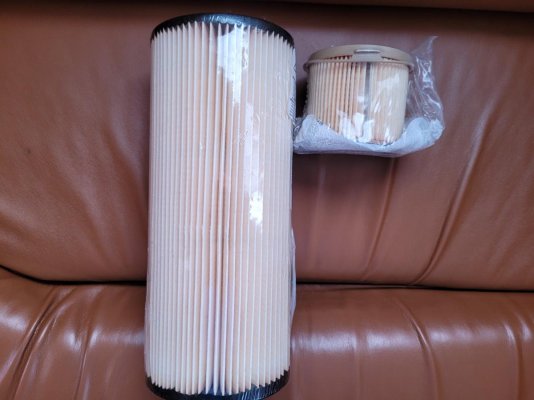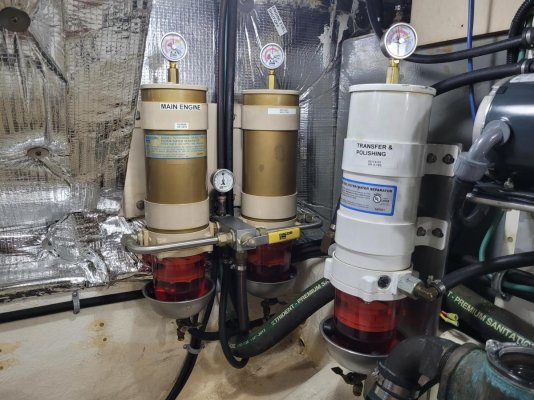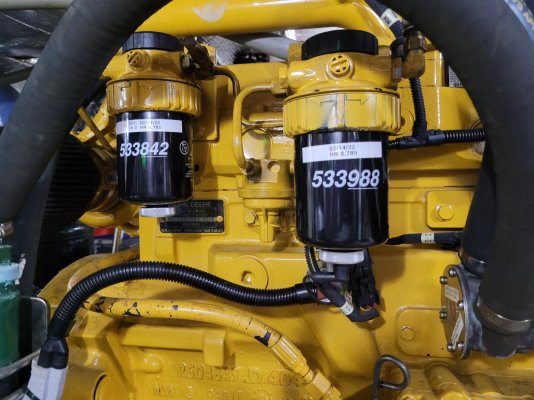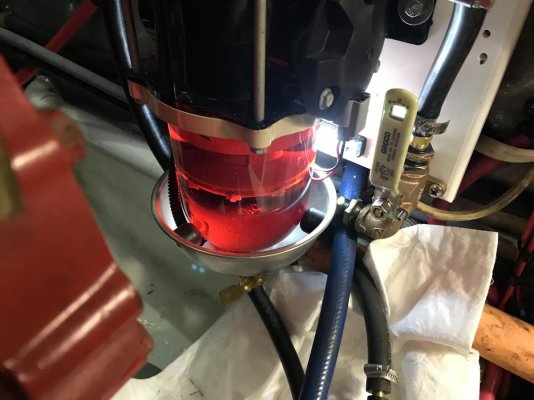Ah, now I understand your problem with Racors. Apparently the following process wasn't intuitive to you. Drain the filter housing completely or at least below the filter element. Don't pull the filter element out until it has stopped draining (you can tell it's stopped draining by watching the liquid level in the bowl). Don't loosen the tee handle on top till you've opened the drain on the bowl. As no tools are required with the tee handle, not sure what you would be dropping inside the housing.
I guess this is where we differ, I don't want to be blind to the amount and type of crud in my fuel tank. When I get crud from a fuel purchase, I want to know within a day of cruising so that I can empty the bowl if water, and avoid buying fuel there again. If you wait till the vacuum gauge indicates higher vacuum, you're probably only guessing at the source of your bad fuel.
Ted
When we had a 'new to us' boat we wanted to get it home near us to complete a number of things lacking on the boat. One issue was fairly poor fuel in the tanks which we attempted to clean as best we could before we left. One Racor 500 had failed, so we needed to do that before we left - as a result we had one engine on the Racor and one on the spin-ons very similar to the pics above.
That trip had us replacing the Racor's 4 times and only had to replace one spin on as the vac gage was showing high.
It was far easier to prime and replace the spin on while underway, easier to prime, and they obviously lasted much longer with the compromised fuel.
Sold me after that cruise back home many years back.




